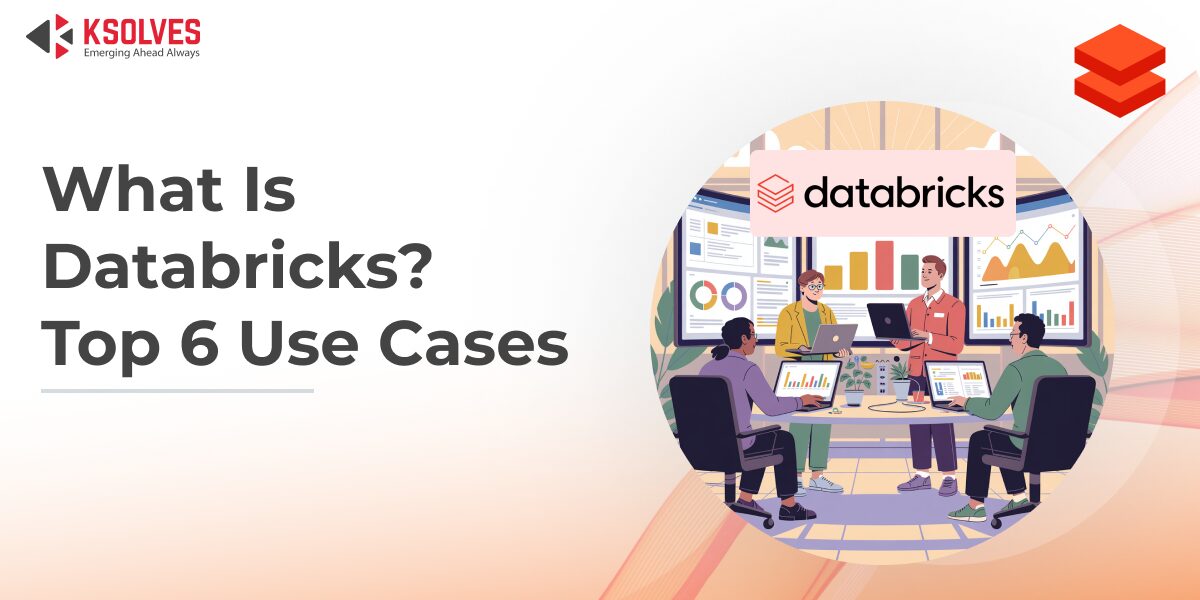Prometheus Scraping Explained: How It Gathers Metrics from Your Systems
Big Data
5 MIN READ
September 2, 2025
![]()

Prometheus is an open-source monitoring system used by many teams to keep track of the health and performance of their applications and infrastructure. It collects data over time and helps users see how systems behave through graphs, alerts, and dashboards.
One of the most important parts of Prometheus is how it collects data. This process is called scraping. In simple terms, Prometheus goes to different systems, asks them for data, and saves that data to be analysed later.
In this blog, we’ll explain how Prometheus scraping works—what it means, how it’s set up, what kind of data it collects, and how it handles different situations. This guide is written to make these concepts clear, even if you’re new to monitoring systems.
What is Scraping in Prometheus?
In Prometheus, scraping is the process of collecting metrics from other systems. Prometheus reaches out to these systems—called targets—at regular time intervals and asks them for data. Each time it does this, it saves the data along with a timestamp. This collected information is known as time-series metrics, and it helps users track changes over time, such as memory usage, request counts, or error rates.
Prometheus scraping uses a pull-based model to collect this data. This means it actively connects to each target and pulls the metrics from them. Each target must expose its data in a format that Prometheus understands, usually through an HTTP endpoint like /metrics.
This is different from a push-based model, where targets would send their metrics to the monitoring system on their own. Prometheus does not work this way by default because the pull model gives it better control over when and how often data is collected, which helps avoid issues like duplicate or missing data.
In short, scraping is how Prometheus keeps track of what’s happening in your systems by visiting each target regularly and recording the latest data they expose.
The Role of the Prometheus Server
The Prometheus server is the central component responsible for managing the entire scraping process. It handles everything, from discovering targets to collecting and storing the metrics.
Prometheus uses a configuration file (prometheus.yml) to know which targets to scrape and how often to scrape them. Based on this setup, the server sends HTTP requests to each target at regular intervals. This interval is defined by the scrape_interval setting, which is usually set in seconds. Some metrics may be collected every 15 seconds, others every minute. It depends on how the jobs are configured.
Once the server collects data from a target, it stores it in its internal time-series database. This database is built specifically for handling monitoring data. Each data point includes a metric name, a timestamp, and a value, along with optional labels (like instance, job, or region) that add more context.
This setup enables Prometheus to deliver accurate and current monitoring data. The server not only collects metrics but also organises them efficiently in a way that makes querying easy. Users can access this data to build dashboards, run custom queries, or trigger alerts based on defined conditions. By managing both the scraping and storage processes, the Prometheus server acts as the core engine that keeps the entire monitoring system running smoothly.
Targets: What Prometheus Scrapes
Targets are the systems or services that Prometheus collects data from. Each target gives Prometheus information about how it’s working. Prometheus visits these targets regularly and reads the data they share through a special link (usually /metrics).
Some real examples of targets include:
- A server showing details like CPU, memory, and disk usage
- A web app showing how many requests it handled, how many failed, and how fast it responded
- A database showing how many queries it’s running and how long they take
- A Kubernetes pod or container showing resource usage and health
- A load balancer showing traffic and error stats
There are two ways to tell Prometheus where to find these targets:
- Static targets: You type in the IP addresses or URLs manually in the config file
- Service discovery: Prometheus finds targets on its own using tools like Kubernetes or cloud platforms
In short, a target is anything that can tell Prometheus how it’s doing. Prometheus connects to it, grabs the latest data, and saves it for monitoring and alerting.
How Prometheus Discovers Targets
Prometheus needs to know where to collect data from. This can be done in two main ways: by manually listing targets or by automatically discovering them.
1. Manual/Static Configuration
In small setups, you can list each target manually in the prometheus.yml file. You define the IP address or hostname of each system you want to monitor. This method works well when your infrastructure doesn’t change often.
2. Service Discovery
In larger or dynamic environments, writing target lists by hand is not practical. Prometheus can automatically find targets using service discovery. It supports several systems for this, including:
- Kubernetes: Finds services, pods, or nodes automatically
- Consul: Used for discovering services in microservice environments
- EC2: Finds instances running in AWS
- Azure, GCE, OpenStack, and others are also supported
Prometheus watches these platforms and updates the list of targets on its own as services start or stop.
3. Relabeling and Filtering
Sometimes, automatic discovery finds more targets than you actually need. That’s where relabeling comes in. Relabeling helps you change, remove, or filter target labels before Prometheus scrapes them. For example, you can drop targets that belong to a different environment, or only keep those with a specific tag like env=”production”.
This setup helps Prometheus stay accurate and focused, even in fast-changing environments. It scrapes the right data, from the right place, at the right time.
Prometheus Metric Endpoint: Format and Structure Explained
Every target that Prometheus scrapes must provide its data through a specific link, usually /metrics. This is an HTTP endpoint that shows all the available metrics in plain text. Prometheus reads this data directly from the target whenever it scrapes.
The data follows the Prometheus exposition format, which is a simple, line-by-line format that lists metric names, their values, and optional labels (like job or instance names). For example:
http_requests_total{method=”GET”, status=”200″} 1280
Each line shows:
- The metric name: http_requests_total
- The labels: extra info like request method and status
- The value: the number Prometheus will record
Prometheus supports four main types of metrics:
- Counter: Goes up over time (e.g., number of HTTP requests)
- Gauge: Goes up and down (e.g,. memory usage or temperature)
- Histogram: Measures value distributions (e.g., request durations)
- Summary: Similar to the histogram, but includes percentiles like 95th or 99th
These types help Prometheus understand what the data means and how to store and analyse it properly.
The Prometheus Scraping Process: Step by Step
Here’s how Prometheus scraping works, step by step:
- Prometheus contacts the target using the /metrics endpoint
- The target responds with all its current metrics in the Prometheus format
- Prometheus reads the response line by line, parses the data, and checks that it’s valid
- It then stores the data in its internal time-series database. Each data point gets a timestamp so it can be tracked over time
- This process repeats every few seconds or minutes, depending on the configured scrape_interval
As a result, Prometheus builds a detailed timeline of what’s happening across your systems. This stored data can be used to create dashboards, run queries, and send alerts when something goes wrong.
Common Prometheus Scraping Issues and Troubleshooting
Sometimes Prometheus doesn’t scrape data as expected. Here are a few common problems and how to fix them:
1. Targets Not Being Scraped
If a target is missing from your metrics, it could be:
- Not listed correctly in the prometheus.yml file
- Not matching the service discovery rules
- Down or unreachable from the Prometheus server
- Using the wrong port or path for metrics
You can check this in the Prometheus UI by going to http://<your-prometheus>:9090/targets. This page shows all targets, their current status, and the last time they were scraped. If you see “down,” click on the error message for more details.
2. Invalid Metrics Format or HTTP Errors
Prometheus expects a specific format for metrics. If a target sends broken or unsupported data, Prometheus will skip it. Common issues include:
- Missing labels or invalid characters in metric names
- Non-numeric values
- Targets returning HTTP errors like 404 or 500 instead of the metrics page
To check this, visit the target’s /metrics endpoint in your browser. If it doesn’t load or looks wrong, that’s the first clue.
3. Debugging Tips Using the Prometheus UI
The Prometheus web UI is helpful for solving most scraping problems:
- Use the Targets tab to see the scrape status
- Use the Graph or Query tab to check if data is coming in (up is a useful metric—it’s 1 if the target is healthy, 0 if it’s down)
- Look at the Logs (if available) or check the Prometheus process output for errors
Fixing scraping issues usually means checking the target, the network, and the configuration file. Once the cause is found, Prometheus will resume collecting data without needing a restart.
Wrapping Up!
Understanding how Prometheus scraping works is key to building a reliable monitoring setup. From identifying targets to collecting and storing time-series data, each step in the scraping process plays an important role in giving you accurate, real-time insights into your systems.
While Prometheus is powerful, managing its setup in large or fast-changing environments can be challenging. Misconfigured targets, scrape failures, or scaling issues often require expert support, especially in production systems where uptime and observability are critical.
That’s where we can help. As a trusted partner offering Prometheus Support services, Ksolves provides expert assistance with setup, configuration, scaling, troubleshooting, and optimisation. Whether you’re managing hundreds of dynamic services or need help integrating Prometheus into a larger observability stack, Ksolves ensures that your monitoring system runs efficiently and delivers the insights you need, when you need them. So, reach out to us today!
![]()







AUTHOR
Big Data
Anil Kushwaha, Technology Head at Ksolves, is an expert in Big Data. With over 11 years at Ksolves, he has been pivotal in driving innovative, high-volume data solutions with technologies like Nifi, Cassandra, Spark, Hadoop, etc. Passionate about advancing tech, he ensures smooth data warehousing for client success through tailored, cutting-edge strategies.
Share with